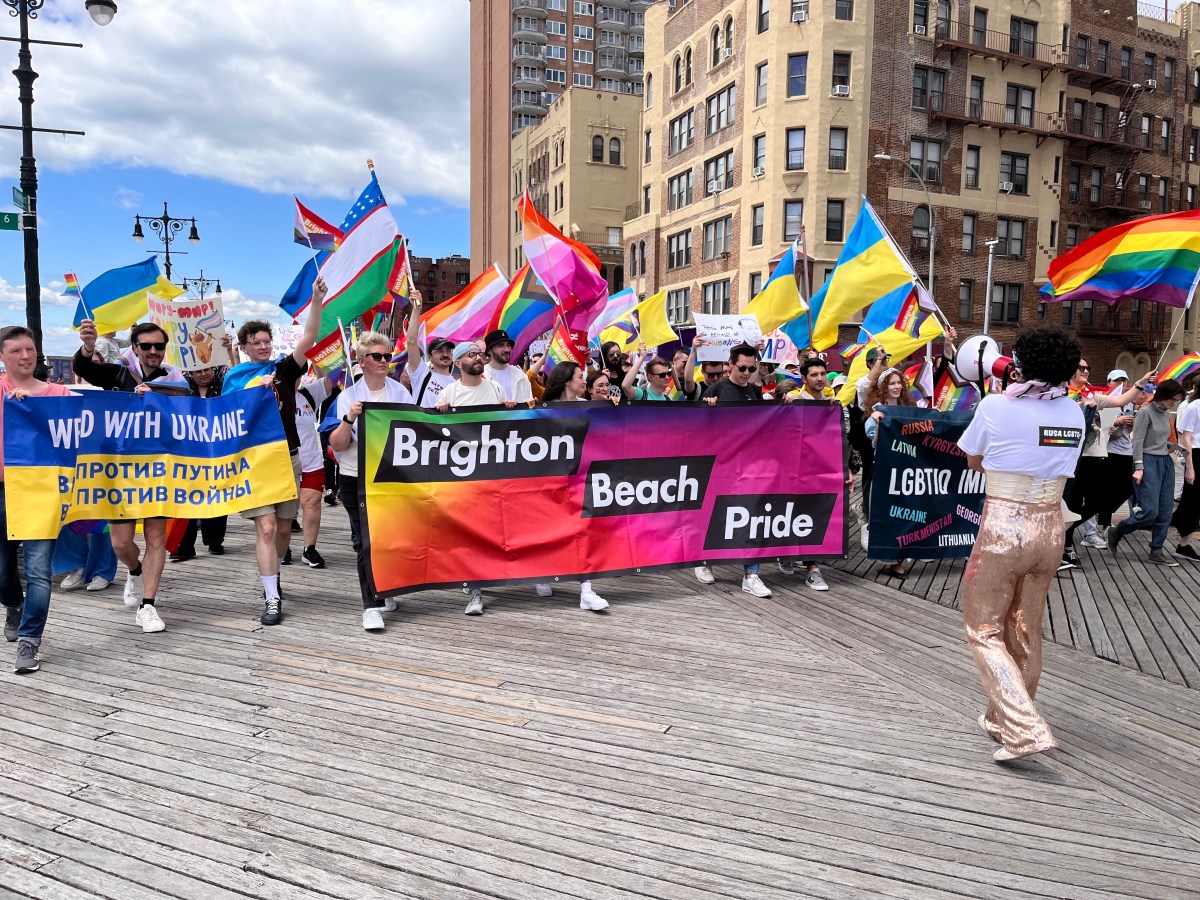Coney Island’s kids want to enjoy themselves, but recently in an act that crossed all ethical boundaries, a local developer used them unwittingly as pawns to promote his bid to develop a casino in their neighborhood. In a long Coney Island tradition, on Saturday, July 1, a group of children participated in what will be a nine-week basketball clinic at Coney Island’s Kaiser Park organized by Brooklyn USA. Joining them for their clinic was former basketball star, New York City Counci Member, and hired promoter of real estate mogul Joe Sitt’s casino bid, Robert Cornegy. Children participating, donned T-shirts with logos of “The Coney,” Sitt’s name for his proposed casino, that he wants built on the south side of Surf and Stillwell. Large banners of “The Coney” were also used as a backdrop for the basketball clinic.
This was not the first time Sitt has splashed his money out onto the community to promote his casino project, but exploiting neighborhood kids, turning them into walking billboards to drum up his bid to bring a major multi-hundred-million-dollar gambling conglomerate to the Coney Island Peninsula was a new low for him. Children should never be used to promote gambling, just as they should not be promoting cigarettes, alcohol, or anything else that is illegal to them. According to several parents of participating children, they were not told that their children would be promoting a casino project. One coach also said that coaches were not told what “The Coney” was and did not know of the proposed casino’s involvement or sponsorship in the clinic.
Youth gambling addiction is a serious problem nation-wide. Roughly 4-5% of youth nationally ages 12-17 meet one or more criteria of having a gambling problem and another 10-14% are at risk of developing a gambling addiction, according to the National Council on Problem Gambling. Sitt’s use of the neighborhood kids to market his project shows his blatant disregard for the national problem.
A casino in Coney Island’s amusement district, is a non-starter for many Coney Island residents. At an April public meeting to introduce details of Sitt’s project to the community at Gargiulo’s restaurant, not a single resident spoke out in favor of the project out of roughly 25 speakers after Cornegy claimed his team had gathered more than 3,000 community signatures supporting the project’s concept.
Residents have expressed concerns about a major casino exacerbating the neighborhood’s mental health crisis, causing an increase crime, making traffic worse and stressing community infrastructure that already lags well behind that of the rest of the city and was devastated by Hurricane Sandy. Sitt has promised the project will generate more high-paying jobs, but he does not guarantee he will hire qualified locals to fill his highest-paying positions.
The promise of jobs is hollow when there is no training, placement, and retention plan to create a local pipeline of candidates.
While Sitt claims a casino is the best way to revitalize Coney Island, there are much better ways to improve the struggling neighborhood.
Residents have long asked for the city to build a recreation center for youth and a job training site for the unemployed in the neighborhood. Currently, the neighborhood has the YMCA on Surf and West 29th but youth looking for recreation outside of the YMCA’s offerings and what is available in a few parks must leave the neighborhood. The New York City Parks Department has failed the neighborhood for a long time. Visitors coming to the Coney Island/Stillwell Avenue train station can see from the Q train the long-abandoned basketball courts at Luna Playground on West 12th Street as one of many examples of the New York City Parks Department’s neglect. Unemployed Coney Islanders do not have a job training site in the neighborhood and often must travel long distances, to downtown Brooklyn or Manhattan for job training.

Major banks and financial institutions have also largely abandoned the area. Recently, Chase Bank re-opened a branch on Mermaid and West 15th Street. The bank had closed their neighborhood branch after Hurricane Sandy. There is one other bank on the peninsula, a Citi branch on Mermaid and West 30th Street. The area needs more lenders to generate a stronger ecosystem for small businesses and a casino would do nothing to attract more banks.
Further, Coney Island residents don’t have the access to nearby fresh grocery options that other neighborhoods have. Mermaid Avenue needs grocery stores selling fresh fish, produce and other basic needs that other healthy retail corridors in Brooklyn have. Revitalizing the neighborhood requires listening to residents and ensuring that local needs are met. Residents wanting to see their neighborhood improved never asked for a casino. Casinos are designed to keep gamblers in them to maximize profits. They are prone to minimize the spillover foot traffic for their neighboring businesses.
Sitt’s move to take advantage of local kids to promote his casino shows how desperate he is to demonstrate any kind of community support for a monstrously unpopular project. His Thor Equities company is in Coney Island, but they have not been generous community benefactors in times where they were not proposing a massive development project that would create great hardship for most of the community. There are better ways to revitalize Coney Island.
Kouichi Shirayanagi is a Coney Island-based Dad, copy editor and community activist. He serves as a member of Neighborhood Advisory Board 13, though he speaks for himself and not the board in this op-ed.
























